4.5 NEW IDEAS IN SCULPTURE

Edgar Degas
Edgar Degas was best known for his painting, but he was also a sculptor. The works in see figure 4.67 were modeled by Degas between 1885 and 1890. Some of his sculpture was made to help him prepare to paint or sculpt larger works. “Degas considered his sculptures to be personal intimate objects which he created for his own pleasure. History records that only a handful of the artist’s closest friends were even aware of the extraordinary number of sculptures Degas had created.
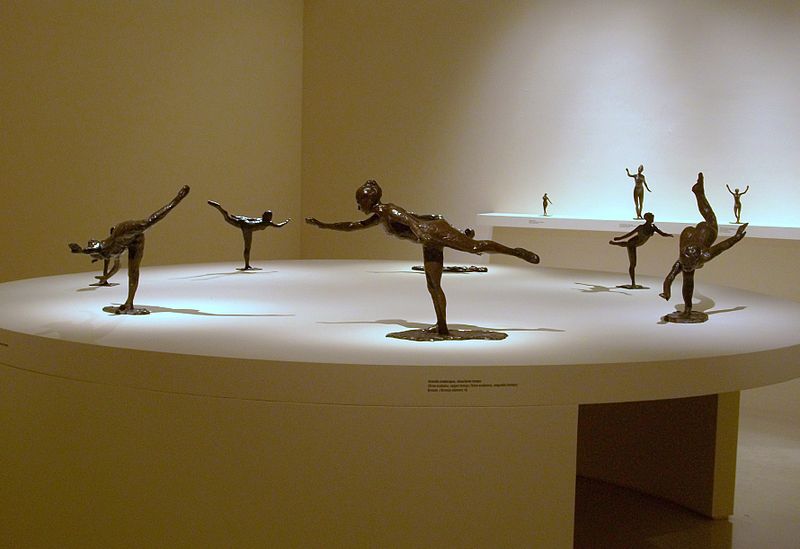
This treasure only become(sic) known after Degas’ death. His heirs found a large number of his sculptural objects scattered around his home and studio. Most of the sculptures were made in wax mixed with clay, and the heirs decided that 74 must be cast in bronze to preserve the images. It was a wise decision. Had they not cast in bronze, this major body of work would have remained unknown forever.”3
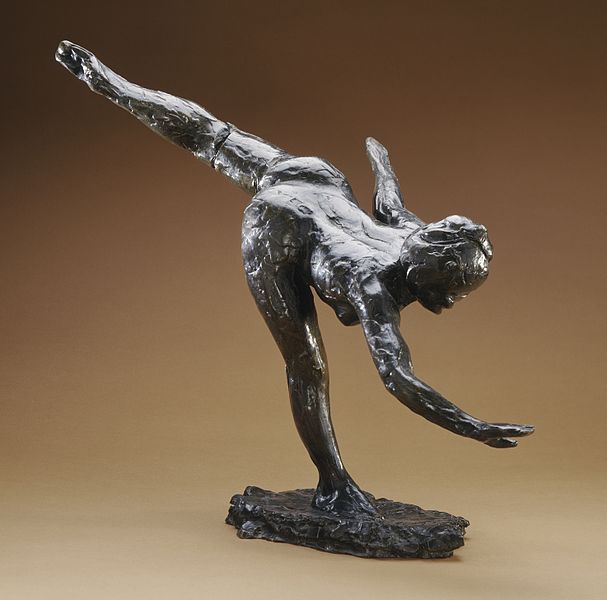
Auguste Rodin (1840-1917)
Francois, Auguste Rene Rodin is thought to be the father of modern sculpture. Although he studied the important Classical, Renaissance and Baroque works, his work went beyond what he learned from them. He was born into a working class family and studied at an art school in Paris. Rodin submitted several works to schools and exhibitions, but the first decades of his life were full of rejection from the art world. His personal life was also never settled. He had a lifelong relationship, and a son, with a young seamstress but never married her. He had several other relationships with women but always seems to have returned to the patient relationship with Rose Beuret. He spent a very short time in military service and was released due to health issues. He traveled in Italy to see the art of Michelangelo and Donatello. Many of his works of the 1870s were inspired by their works, but they were not what would be called copies. He sought to blend Michelangelo’s mastery of the human form with his own searching for angst and changing human nature. He sometimes climbed a ladder to look at a subject from a different angle and created works that were very different from the expected.
When the Musée d’Orsay was destroyed by fire in 1871, Rodin entered and won a competition to create a door for the new museum of decorative arts. His work was supposed to be delivered in 1895, but the museum was never built. He continued to work on the doors, known as The Gates of Hell, for many years. This is Rodin’s idea of what hell would have looked like. Close observation shows that he turned away from the established rules of composition and produced a disordered depiction of hell. There 186 figures and groups which he used to show the isolated and tormented condition of men and women. Many of Rodin’s large, major works were first sculpted as a small section of this larger work. Most people who know Rodin’s work know of The Thinker, The Three Shades, The Kiss, Ugolino, and the Falling Man. Rodin’s inspiration for this work came from Ghiberti’s Gates of Paradise at the Baptistery of St. John in Florence, Michelangelo’s Last Judgment on the wall behind the altar in St. Peter’s basilica in Rome, and Dante’s Inferno. His works are bent and twisted to the limits of endurance. Light, rather than color models his work. He used the concept of metamorphoses or flux as his figures disappeared or emerged from the bronze as if it were a pool of water. These twisting figures, although not distorted in their naturalism, formed the basis of distorted figures for many artists yet to come in the twentieth century.

Paris.5 The Gates of Hell
Through me the way into the suffering city,
Abandon every hope, who enter here.
Dante, Inferno, 3.1–9

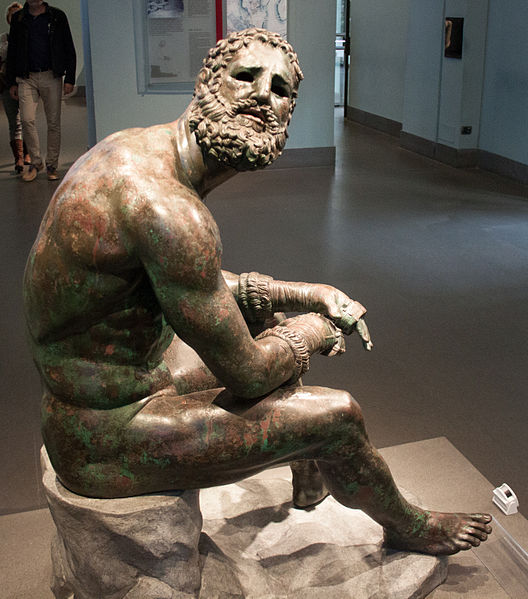
The Thinker hunches over in thought, but it is not a position of rest. His brow is knitted, his toes cling to the rock, and his fists are clenched. This work is not related to the idealism of the Greeks or the beauty of the Baroque age, but it is closer to the realistic sculpture of the Hellenistic Boxer of Quirinal made in the 3rd to 2nd century B.C.E. The Boxer rests between matches nursing his beaten hands, broken nose, and the anguish of what the next fight might bring.
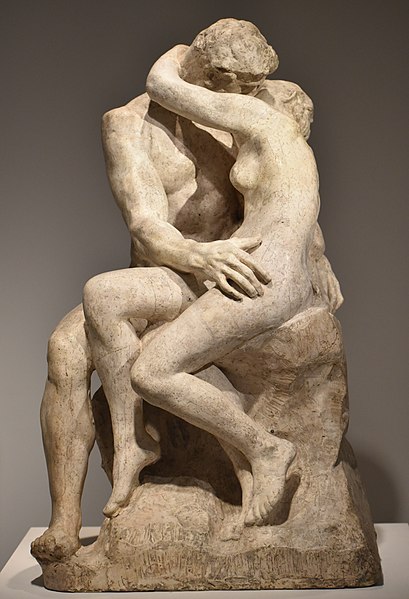
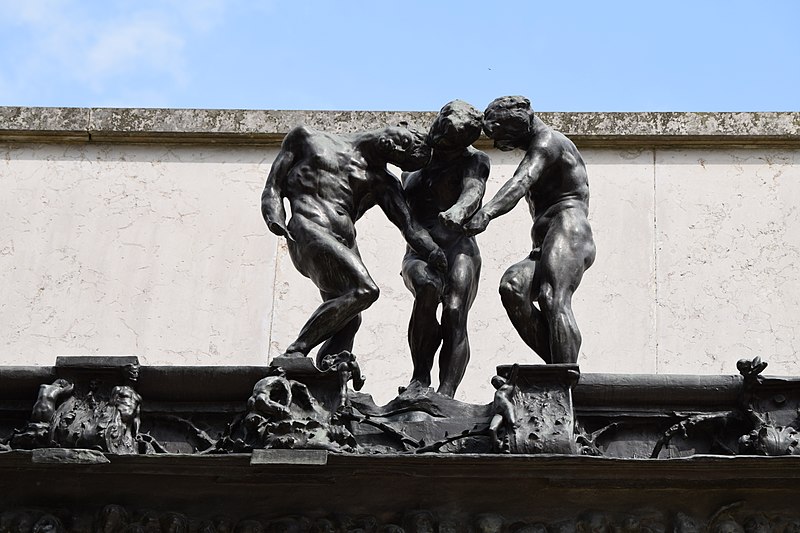
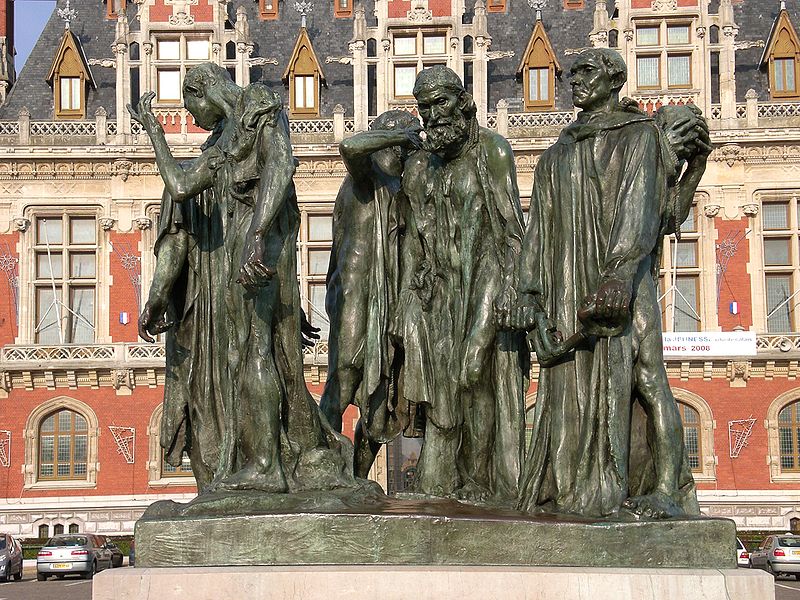
In 1885 Rodin was commissioned by the city of Calais to create a sculpture to commemorate the courage of city leaders during the Hundred Years War between England and France in 1337. Edward III, the king of England, told the people of Calais that they must give up six members of the city council in order to save the city from destruction. Eventually the burghers were not killed, but Rodin chose to depict them in this sculpture as they were gathered together and sent away expecting that they would be killed. He also chose not to single out one man as the central focus, but made the sculpture to be viewed from all angles as if to make each man important, rather than just making one man a hero. Notice that the men are thin and their clothing is ragged, which is a reference to the dire circumstances of the people living in the city. Since the City of Calais commissioned the work, they were likely hoping for a heroic sculpture of one of the burghers, but he gave them this instead. There are two versions of this work, one with and one without a pedestal, allowing them to be placed in different positions and to be viewed much closer by the audience.
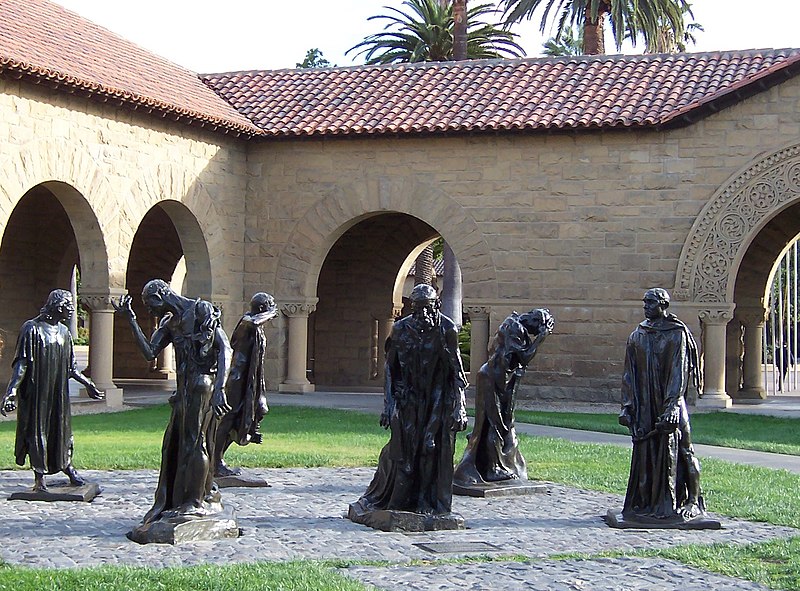
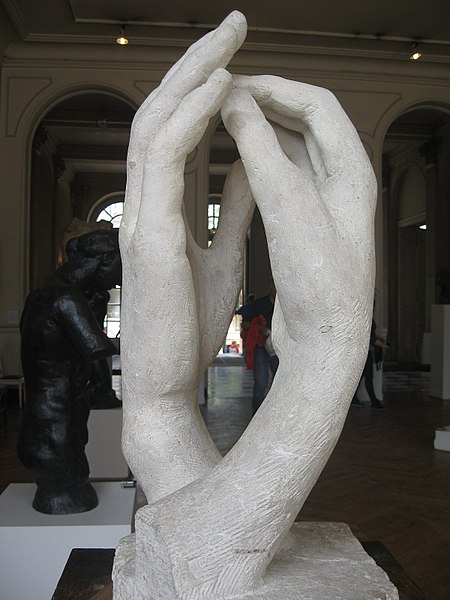
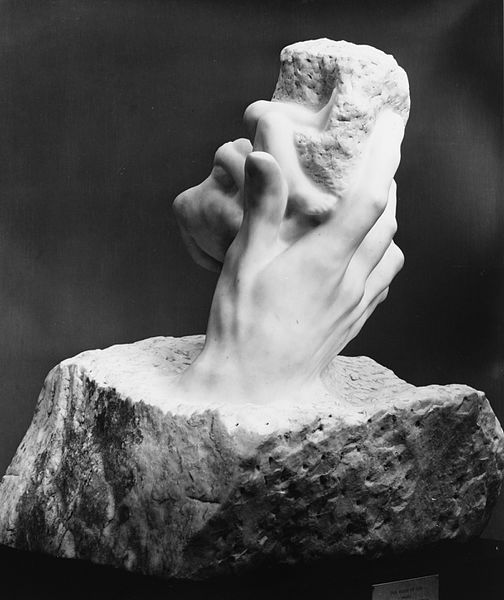
The Cathedral is carved of stone and is “still covered in toolmarks. The Cathedral is a combination of two right hands, belonging to two different figures. It was entitled The Ark of the Covenant, before being named The Cathedral, very probably after the publication of Rodin’s Les Cathedrales de France in 1914. Parallels may be drawn between the mysterious inner space that seems to emanate from the composition and Gothic architecture.”14 These works are a few of the many carvings of hands, including the Hand of God, and Rodin’s Hand created by Rodin. It was one of his favorite subjects.

So what were the effects of Impressionism?
Here is a short list of ideas:
- Rejection of the traditional attributes of art
- Art no longer had to be finished to be of value
- Spontaneity of expression was valued more than photographic exactitude
- There was an independence of spirit and a willingness to separate themselves from the official Salon exhibitions
- There was an expression of modern ideas rather than honoring the traditions of the past
- There was a focus on outdoor light and artists often painted directly out in the sunlight
- Techniques were freer and used pure tones
- There was a passionate search for the moment in time
- Artists no longer used dark under painting
- Artists painted modern subjects
- Color and light became more important
- Japanese design elements became important

